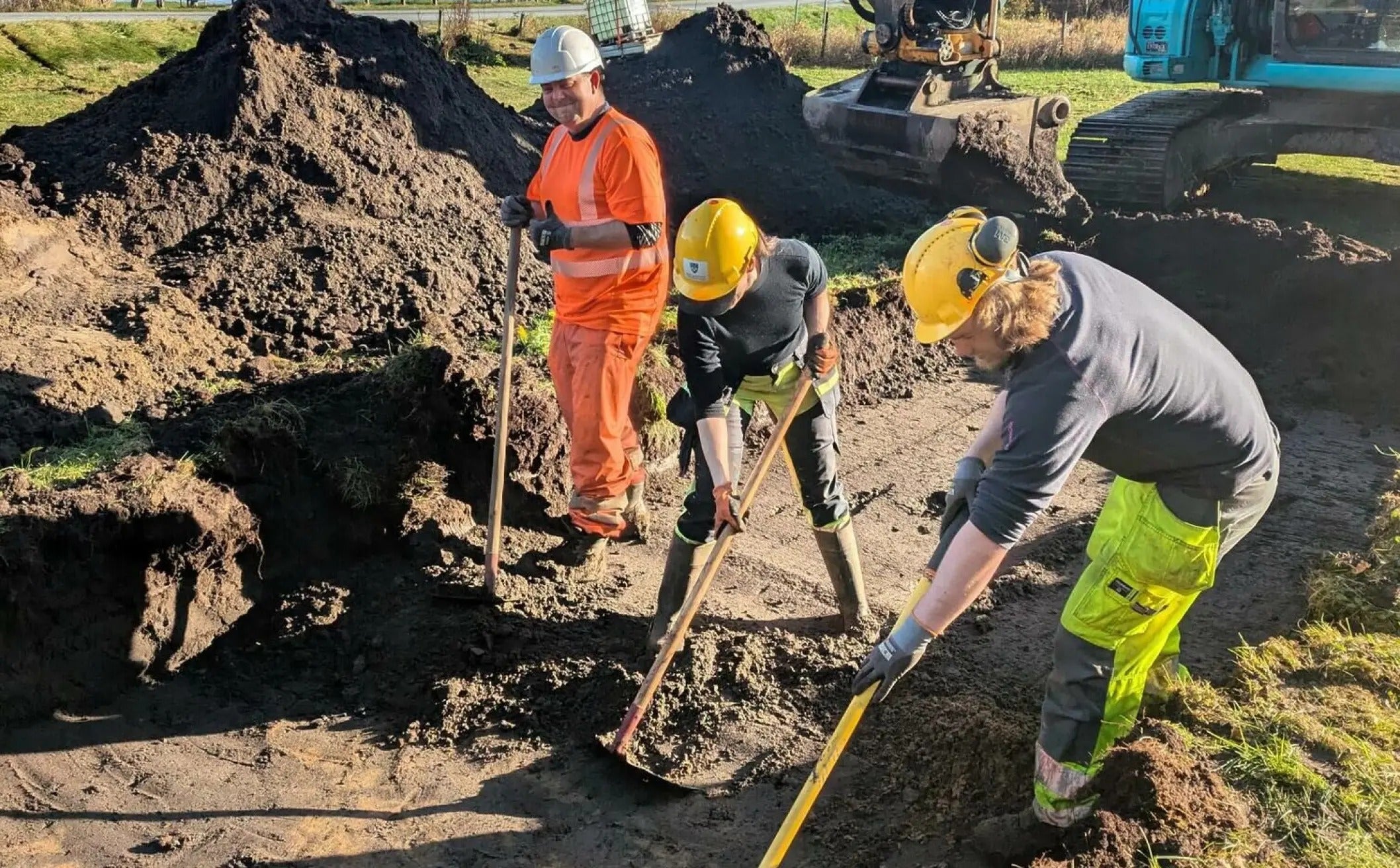
Viking Longhouse and Grave Discovered in Hjørungavåg
Archaeological excavations in Hjørungavåg, Western Norway, have unveiled significant remnants from the Viking Age, including traces of a longhouse and a burial site. These findings, coupled with artifacts from earlier prehistoric periods, paint a vivid picture of Hjørungavåg’s historical importance. Located near the site of the historic Battle of Hjørungavåg, these discoveries deepen our understanding of how this region functioned as a cultural and political hub across millennia.
Ground-Penetrating Radar: Revolutionizing Archaeology

(Photo: Arve Nytun, Møre og Romsdal County Municipality, Handout, NTB)
The use of ground-penetrating radar (GPR) was pivotal in identifying the longhouse and Viking grave without disturbing subsurface structures. Archaeologist Arve Eiken Nytun, leading the project for Møre og Romsdal County Municipality, emphasized the radar’s transformative role.
“The radar has given us a completely new picture of the area and helped us prioritize what is important to excavate,” Nytun stated.
This technology enabled researchers to identify post holes characteristic of Viking Age construction, a key indicator of longhouses. Longhouses were central to Viking communities, serving as multifunctional spaces for living, governance, and communal activities.
Traces of a Viking Age Longhouse
The longhouse discovery is particularly significant given its proximity to the Battle of Hjørungavåg (circa 986), a critical confrontation where Norwegian forces led by Haakon Jarl defeated an invading Danish fleet. The longhouse may have been a residence or administrative center linked to regional governance or preparations for the battle.

A reconstructed Viking chieftain's longhouse at the Lofotr Viking Museum in Lofoten, Norway, showcasing Viking Age architecture and daily life. (Photo: Jörg Hempel, CC BY-SA 2.0)
The Viking Grave
Details about the Viking grave remain sparse, but its presence reinforces the site's importance during the Viking Age. Viking burials often included grave goods reflective of the deceased’s status, and future excavation and analysis may reveal whether this burial holds similar artifacts, potentially offering insights into the societal structures of the time.
Layers of History: Prehistoric Occupation
Hjørungavåg’s significance predates the Viking Age. Stone Age artifacts found at the site are estimated to be up to 7,000 years old. Additionally, evidence of structures from the late Stone Age or early Bronze Age (circa 3,500–4,000 years ago) suggests that this area was continuously occupied and possibly served as a central gathering or settlement site.
Nytun speculates that Hjørungavåg may have been a "center of power" during the Iron Age, a hypothesis supported by the site’s strategic location and historical prominence.
Contextualizing the Battle of Hjørungavåg
The discoveries are located just a few hundred meters from the battlefield described in the Heimskringla, Snorri Sturluson’s compendium of Old Norse kings’ sagas. The battle, a pivotal moment in Norwegian history, marked a decisive victory for Haakon Jarl against Danish forces and solidified Norwegian independence.
The proximity of the longhouse and grave to this battlefield raises compelling questions. Were these structures part of the logistical network that supported Haakon Jarl’s forces? Could the grave belong to a warrior or a prominent figure from this era?
Implications of the Findings

Archaeological excavations in Hjørungavåg, western Norway, have uncovered a 4,000-year-old Stone Age house, post holes from the Iron Age, and evidence of Viking Age activity. (Photo: Arve Nytun, Møre og Romsdal County Municipality, Handout, NTB)
Historical Significance
The coexistence of artifacts spanning multiple eras at Hjørungavåg underscores its longstanding importance as a settlement and power center. The Viking Age discoveries, in particular, offer insights into the region’s political and social organization during a transformative period in Norwegian history.
Technological Innovations
The success of GPR highlights its growing importance in archaeology, enabling precise excavation while preserving the integrity of fragile structures. This technology may inspire similar investigations at other historically significant sites across Norway and beyond.
Broader Questions
While the longhouse and grave offer fascinating glimpses into Viking life, many questions remain. Who lived in this longhouse, and what role did they play in the events surrounding the Battle of Hjørungavåg? What can the burial site tell us about Viking Age funerary practices and societal hierarchies?
Conclusion: A Rich Legacy Resurfaces
The discoveries at Hjørungavåg represent a vital addition to our understanding of Viking Age Norway. From the strategic use of cutting-edge technology to the site’s connections to one of the most celebrated battles in Norwegian history, these findings remind us of the region’s enduring significance.
As excavations continue, we anticipate uncovering more details about the lives and legacies of those who inhabited Hjørungavåg, bridging the past with the present and illuminating Norway’s storied Viking heritage.
References
NTB Norwegian News Agency. “Longhouse and Viking Grave Likely Found in Western Norway.” Science Norway, November 9, 2024.
Møre og Romsdal County Municipality. Press release (translated).
Sturluson, Snorri. Heimskringla: The Chronicle of the Kings of Norway.







